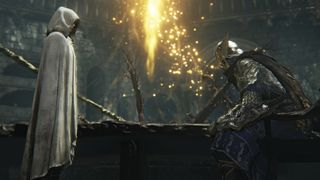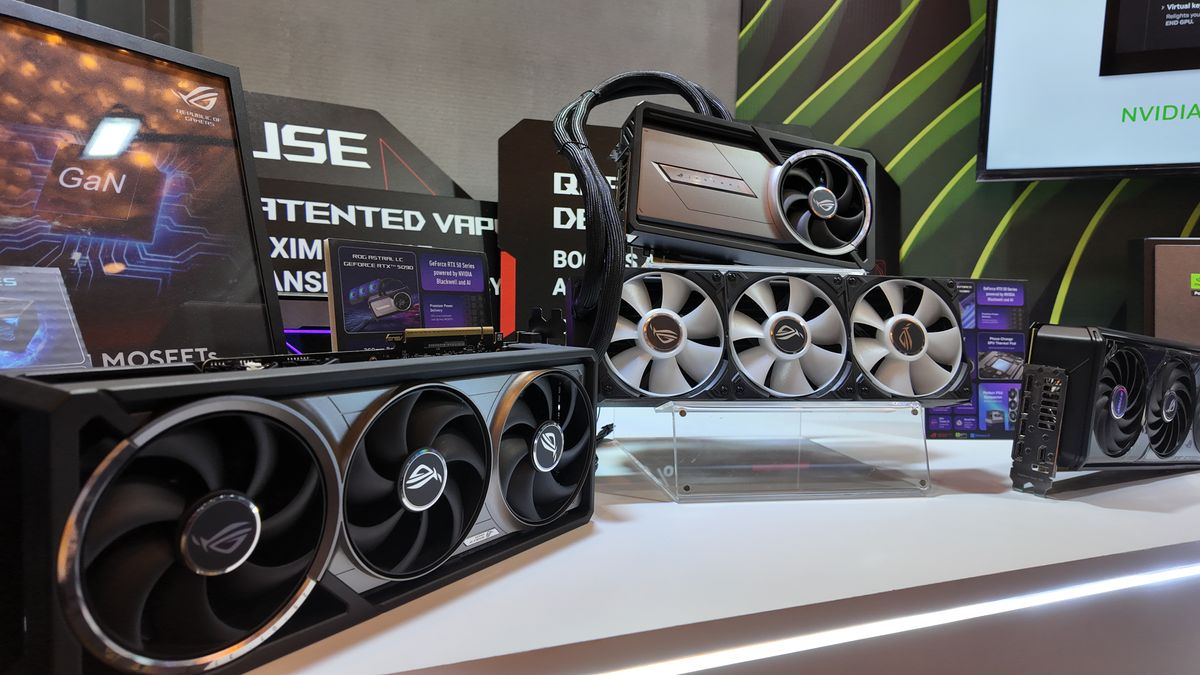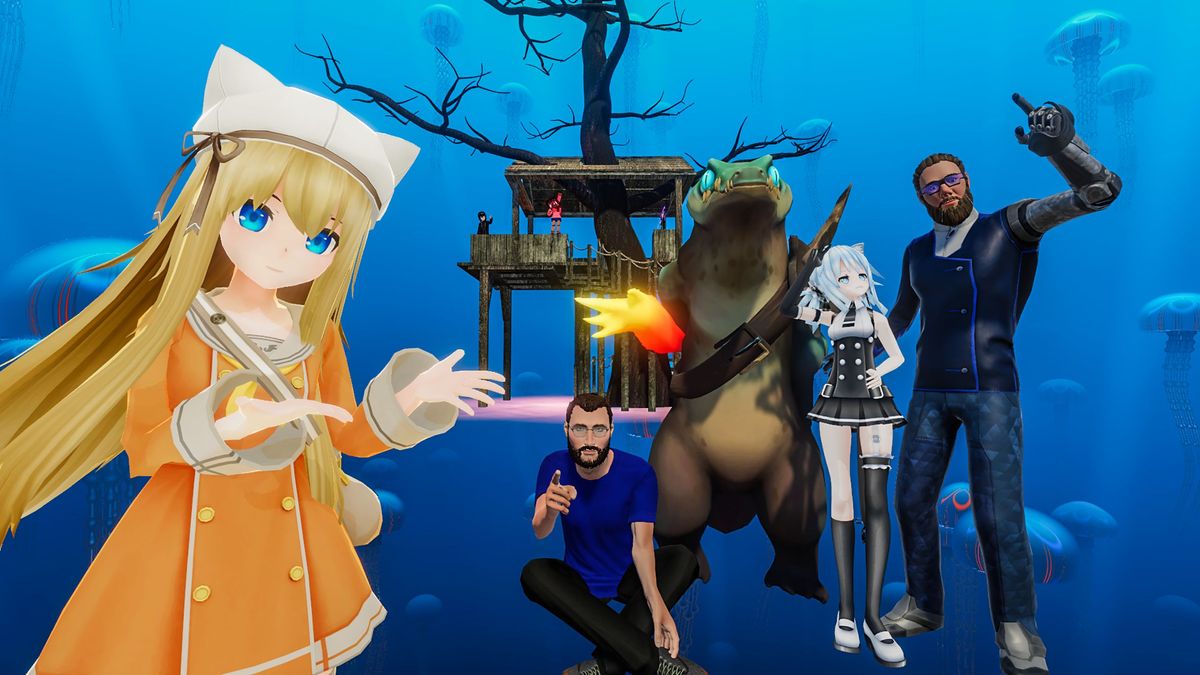FromSoftware producer Yasuhiro Kitao asks us to forgive him if he seems nervous. He doesn't, but I'd have already sweated through my socks if I was in his shoes—he's about to let us play FromSoftware's next game a full week before the rest of the world learns it exists with a surprise trailer at The Game Awards. After the 25-million-selling phenomenon of Elden Ring, this follow-up is the last thing any of us expect. Because it looks—and I say this with zero shade—kinda like a mod.
Modders delight in remixing FromSoftware's RPGs into games that are easier (or harder), sillier (or scarier). The Seamless Co-Op mod for Elden Ring has been downloaded by more than 2.5 million PC gamers. Randomizers that shuffle Souls games' items and enemy locations are mainstays of speedrunning events. So who says FromSoftware can't get in on the fun by modding its own game? Well, crank the speed up to 150%, ditch fall damage, throw in a ton of random loot and some other roguelikey variables, and you've pretty much got Elden Ring: Nightreign.
I'll admit I didn't take to it right away. But about four hours into an all-day playtest in a conference room in Tokyo, blinds drawn against the sun until it dropped below the nearby office towers, I started to feel it: that raw animal thrill of a great roguelike build. The chest-thumping glory of slicing a six-foot katana through the guts of Margit the Fell Omen, proccing a bleed that chunked off 10% of his health bar, and then mashing my character's special ability to double all the damage I just dealt. Glorious.
Nightreign is simultaneously part Elden Ring, and part totally new ground for a studio that's gotten very comfortable making a certain type of RPG over the last decade.
Speed Gracer

Nightreign is Elden Ring Turbo, a condensed three-player roguelike with a lil' dash of Monster Hunter to it
This spin-off makes a perplexing first impression, treating Elden Ring's weapons, enemy types, and starting zone Limgrave as an all-you-can-reuse asset store. The vibes get even stranger when you see a battle royale-style wall of deadly rain encircling the map, and characters dashing around on foot like they're set to permanent fast-forward, now nimbly mantling cliffs and walls. It seems almost sacrilegious to take the pieces of a game that was so microscopically assembled and go hog wild with them. If Da Vinci wanted to repaint the Mona Lisa doing a Gene Simmons tongue thing, well, sure, he earned it. But it'd be an adjustment, you know?
Playing Nightreign reminded me that in the '90s Capcom balked at the sudden popularity of bootleg, hacked versions of Street Fighter 2 arcade machines that sped up the combat and added wild special moves like mid-air fireballs… until they went out and played them. Then they knew there was clearly no going back. Precision game balance be damned, the speed was just too much fun. Their resulting official upgrade kit Street Fighter 2 Turbo: Hyper Fighting—literally a mod!—set the pace for every iteration of Street Fighter that followed.
Nightreign is Elden Ring Turbo, a condensed three-player roguelike with a lil' dash of Monster Hunter to it, as you choose a final boss to face at the end of each 30-ish minute run. That's assuming you survive two "days" of the circle shrinking to a focal point somewhere in alt-Limgrave, each night culminating in its own tough boss battle. When I started my first session by dropping onto the map from a spectral bird, the entrance was so Fortnite-coded I wondered if FromSoftware was joining the live service party with a battle pass, seasonal events and $20 epic skins.
But that's not Nightreign, despite all appearances.
FromSoft's still FromSoft
ELDEN RING NIGHTREIGN – REVEAL GAMEPLAY TRAILER - YouTube

"We wanted to have a game that felt like a complete package out of the box on the day of purchase, so everything is unlockable... it's not what we'd consider a 'live service' game," says director Junya Ishizaki, who served as the battle director on Elden Ring and has been with FromSoftware since the original Dark Souls. Nightreign will get some post-release balance updates, as Elden Ring itself did, but beyond that? "We're still in the process of thinking about the possibilities," he says.
Nightreign is Ishizaki's baby: via an interpreter he told me that he'd been brewing game ideas when president Hidetaka Miyazaki suggested he try directing. He put together the pitch and got a green light. "The one [bit of guidance] that sticks out is that he basically said, 'do it as you please' for this project," Ishizaki says.
It's a lean and unusually straightforward game for FromSoftware—no PvP elements at all, no invasions, no esoteric multiplayer covenants a la Dark Souls. "We wanted to have a sense of accomplishment from each defeat and each success, and we wanted this to be different from Elden Ring and past titles," Ishizaki says.
Win or lose, you'll end a run with relics you can equip in future sessions, offering a range of buffs to HP, or magic attacks, or even your basic actions. I found one relic that made my healing flask also heal my allies, a huge benefit when we each only had four to quaff before running dry.

Preset "heroes" with unique attributes replace the character creator. The lithe Duchess, for example, has a tiny HP pool but dodges attacks with a Bloodborne-style quick step instead of the usual roll. The characters are cool, and so are their abilities—empowering additions to a combat system that's always been more deliberate than razzle-dazzle. Still, there's something odd about this mashup that plucks bits and pieces from roguelikes and battle royales and even hero shooters and uses them for seasoning in a boiled down pot o' Elden Ring. I ask Ishizaki what he'd say to players who view the changes as FromSoftware simply copying what's popular in other games.
"The focus was condensing this experience down—the RPG elements, the exploration, the character building and leveling. We wanted that to feel like it was all coming together and culminating in a boss fight but in a more concentrated form," he says. "For this new sense of accomplishment that you wouldn't quite find with Elden Ring or our previous titles, we felt like we needed some new mechanics and some new elements to add into that mix. We've never really held the stance 'let's absolutely not do anything that other companies are doing or not follow any trends.' So we didn't really see this as chasing a trend, but we saw these as interesting elements that could work well within our multiplayer-focused session-based gameplay."
This is the run
My favorite thing about Nightreign, almost immediately, is the addition of two unique abilities per character that totally change how I play. The characters themselves aren't quite classes, but the Duchess is a clear glass cannon DPS, able to double the damage she and her allies have just dished with her Restage ability. By the end of the day I was yelling "Run it back!" to my co-op squadmate playing Duchess when I used the knight character Wylder's grappling hook to zip towards a boss, then drop his ult, a fiery charged explosion that deals immense damage at close range.
As with Street Fighter 2 Turbo, the bombastic new moves are thrilling, even if they feel slightly bolted on to an existing combat system. (Does Wylder only have a grappling hook because FromSoftware already had the physics code for that exact mechanic ready to go from Sekiro?) The default controls, at least currently, are a bit awkward—instead of getting their own dedicated buttons, the abilities require first hitting Y/Triangle on a gamepad at the same time as one of the triggers. This mostly worked fine but the occasional mispress had me swapping to a two-handed sword grip instead of using my ult at a key moment.

As the all-rounder knight archetype, Wylder is emblematic of how different Nightreign feels from the usual singleplayer Souls game; the quick cooldown on his grappling hook gives him a huge agility boost over the usual "default" plodding sword-and-board playstyle.There's also a mage, a tanky heavy knight, and four other characters I didn't set eyes on, but broadly speaking any character can use almost any weapon, from a staff to a colossal greatsword. Weapons come with random buffs attached, including passives that are in effect as long as you keep them in your limited inventory. I've always lamented how rarely I end up changing builds in a Souls campaign, so being forced to make do with what I find on the field—while also benefitting from what I choose to keep in my pocket—is a delightful change.
Like my favorite roguelikes, Nighreign seems eager to pepper gear with stats that compound in ways that range from 'ooh this will change my build' to 'I am now more powerful than god,'
When I first drop onto Nightreign's map, I don't know how to decide where to go, so I dash towards the nearest fort and immediately get in over my head. At level 1 you're extremely squishy, but there's always a low-level camp not far away that serves as an easy source of runes to farm for 1-2 levels and a couple weapon pickups. Sites of grace dot the map to refill your flasks and let you level up all your stats in one go—no RPG picking and choosing—but they no longer provide a completely safe haven. After a few minutes of free exploration, the circle starts closing, pushing me towards the eventual first night's boss fight. We die to the Demihuman swordsman and queen, a pair of Elden Ring bosses we'll be absolutely curb stomping within a few hours.
As with most roguelikes, knowledge and familiarity will take you a long way in Nightreign. Four hours after starting, my co-op squad had our strategy down to a science. Land, hit the nearest outpost just to grab a couple levels and any weapons with useful passive skills, then beeline for the nearest church, which will present us with an extra healing flask each. Stop along the way only for easy fights. Stay grouped up if anyone encounters a field boss we think we can take, like the weak sauce perfumer who dies in a few hits as long as you avoid his one lazy fire attack. If we have time, we rush to a second church before the end of day one; our goal is to get at least three of the four that are spaced around the edges of the map by the end of day two.
Calling out targets and abilities is key. Against night one's boss we gang up on the fast-but-weak demihuman swordsman while ignoring the lumbering queen. Our Guardian uses his ult, an AOE divebomb, to revive one of us when we go down—you heal your allies in Nightreign by simply attacking them. By the time we fight Margit the Fell Omen on night two we're arguably overleveled, having cleared out a fortress, deleted a dragon thanks to a massive bleed hit doubled by Duchess's Restage, and even stopped by an item vendor to grab some smithing stones to upgrade our weapons one tier. We're nearly at what we think is the game's level cap of 15 when we fight the final boss for our run, a cerberus stand-in with some fiery bad breath.

The first time we face it we're nervous, but it proves easier than one of the potential night two bosses, a Tree Sentinel flanked by two other heavily armored riders. The second time we barely break a sweat dodging a familiar set of FromSoft boss stomps, divebombs, and fire blasts. After some discouraging defeats at the hands of bosses who seemingly had overly-tuned health pools, those back-to-back wins felt good. Real good—in that way that roguelikes make you want to start all over again and experience the same rush with a new build, or see if you can recreate that exact combination of items that just made you feel invincible.
Like my favorite roguelikes, Nighreign seems eager to pepper gear with stats that compound in ways that range from 'ooh this will change my build' to 'I am now more powerful than god,' but it was hard to judge those combinations in this preview. Much of the game's English text was not yet inserted, with often unhelpful fragments of item descriptions. This ultimately left me uncertain about the thing Nightreign has to get just right: its map.
Unmapped
Nightreign's map is peppered with familiar outposts, ruins and forts full of enemies, caves and gaols (which weren't functioning in the build we played) and churches. While the bosses and enemies you encounter in these locations vary from run to run, I am a bit worried that retracing my steps across the mostly unchanging topography dozens of times will get old even with that peppering of change. But Ishizaki says the map will sometimes see "large-scale changes to terrain in the form of procedurally appearing volcanos or swamps or forests," and hinted at some degree of meta progression that will apply to the storylines of the hero characters and the map evolving in some way as you play more of the game.
"We wanted the map itself to be a giant dungeon, so players have the chance to traverse and explore a different way every time they play," he says. "You have to choose the boss you want to face at the end of the third day. Once you've made that choice, maybe you have an idea of how you want to strategize against that boss, and this might change how you approach the map. We wanted to offer players that agency to decide 'okay, I need to go after a poison weapon this time to face this boss. Maybe that will take me to an area I don't usually go, or an enemy I don't usually want to fight.' Hopefully this gives a little more variation between runs as well."
Without complete item descriptions or tooltips to help me interpret the map's many tiny icons, I can't say I developed any strategies more sophisticated than "get more healing flasks." And that worked so well, it makes me a little uneasy about how much Nightreign will really demand more thought from me. The wizard towers, for example, seem painfully simple, with the "puzzles" to enter them never varying from a couple possible locations for a well-telegraphed hidden object to be waiting for a sword swipe. I was already sick of reenacting the same rote solution and the same climb to the top of the tower for a treasure chest after a couple hours. These simply need to be more complex, and more varied, to stay interesting for more than a couple hours of play, which is worrying in a game meant to be played over and over again.

I hope those sorts of issues are merely a symptom of this early build, and not indicative of what will hopefully be a richer, more varied strategic playspace in the final game, which will be out sometime in 2025.
The thrill of the higher pace will only work for so long, and when it wears off, Nightreign needs something to fill the void left by the lack of FromSoft's famously intricate level design. Or it simply needs more maps—FromSoft has indicated this is the map, with nothing beyond the confines of this reimagined Limgrave. Discovering there's actually a remixed Caelid, and remixed Liurnia, and so on and so forth would certainly assuage my worry that the terrain itself will prove a weak link. But as drastically different as Nightreign is from Elden Ring itself, I did get the sense that one thing is the same as it ever was: FromSoftware's still holding tight to plenty of secrets. One day with Nightreign wasn't nearly enough.
For even more detail than I've gone into here, check out my big explainer on all things Elden Ring: Nightreign.

 3 weeks ago
9
3 weeks ago
9









 English (US) ·
English (US) ·